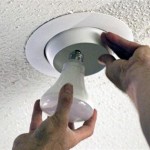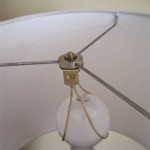Standard Ceiling Fan Size Guide: Essential Considerations
Choosing the appropriate ceiling fan size is critical for ensuring optimal airflow, comfort, and aesthetic appeal in your space. Several key aspects must be taken into consideration to determine the ideal size for your specific needs.
In this comprehensive guide, we will delve into the essential aspects of standard ceiling fan size and provide you with the necessary information to make an informed decision. Whether you are a homeowner, interior designer, or architect, this guide will equip you with the knowledge to select the perfect ceiling fan size for your space.
### Room SizeThe most important factor in determining ceiling fan size is the area of the room in which it will be installed. For rooms up to 100 square feet, a fan with a blade span of 36-42 inches is typically sufficient. For rooms between 100 and 200 square feet, a fan with a blade span of 44-52 inches is recommended. And for rooms larger than 200 square feet, a fan with a blade span of 56-60 inches or more may be necessary to provide adequate airflow.
### Ceiling HeightThe height of your ceiling also plays a role in determining the appropriate fan size. For ceilings up to 8 feet, a fan with a mount height of 8-10 inches is typically recommended. For ceilings between 8 and 10 feet, a mount height of 10-12 inches is recommended. And for ceilings higher than 10 feet, a mount height of 12-14 inches or more may be necessary to ensure that the fan is placed at an optimal height for air circulation.
### Downrod LengthThe length of the downrod, which connects the fan to the ceiling, is another important consideration. The downrod length should be chosen based on the ceiling height and the desired height of the fan blades. For ceilings up to 8 feet, a downrod length of 3-6 inches is typically recommended. For ceilings between 8 and 10 feet, a downrod length of 6-12 inches is recommended. And for ceilings higher than 10 feet, a downrod length of 12-18 inches or more may be necessary to ensure that the fan is positioned correctly.
### Fan Blade PitchThe pitch of the fan blades, which refers to the angle at which they are angled, also affects airflow. Fans with steeper blade angles, or higher pitches, tend to produce more airflow than fans with shallower blade angles, or lower pitches. Therefore, if you are looking for a fan that will provide strong airflow, you should choose a fan with a higher blade pitch.
### Motor PowerThe power of the fan's motor is another important factor to consider. The motor power is measured in cubic feet per minute (CFM), which indicates the volume of air the fan can move. For rooms up to 100 square feet, a motor power of 1,500-2,000 CFM is typically sufficient. For rooms between 100 and 200 square feet, a motor power of 2,000-2,500 CFM is recommended. And for rooms larger than 200 square feet, a motor power of 2,500 CFM or more may be necessary to provide adequate airflow.
### ConclusionSelecting the correct standard ceiling fan size is essential for ensuring optimal airflow, comfort, and aesthetic appeal in your space. By considering the essential aspects discussed in this guide, including room size, ceiling height, downrod length, fan blade pitch, and motor power, you can make an informed decision that will meet your specific needs.

Ceiling Fan Size Guide Delmarfans Com

How To Buy A Ceiling Fan Four Step Guide Lamps Plus

Ceiling Fan Size Guide Delmarfans Com
Creslow 5 Blade Ceiling Fan Dimensions Drawings Com

Fan Selection Guide Kdk Fans Malaysia
Dempsey Low Profile 4 Blade Ceiling Fan Dimensions Drawings Com

How To Buy A Ceiling Fan Four Step Guide Lamps Plus

How To Size A Ceiling Fan 7 Steps With Pictures Wikihow

Standard Ceiling Fan Model D Zire Size 1200 Mm At Rs 1190 Piece In New Delhi

Yuhao Smalisze 42 In Integrated Led Black Indoor Standard Ceiling Fan With Light Dc Motor And Remote Control Ddc1053abk42 The Home Depot
Related Posts








